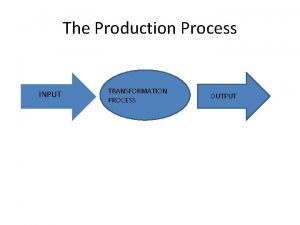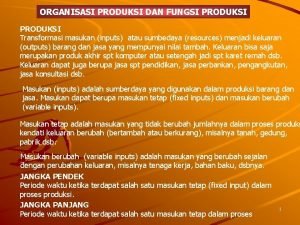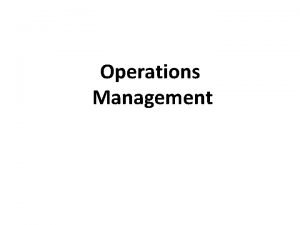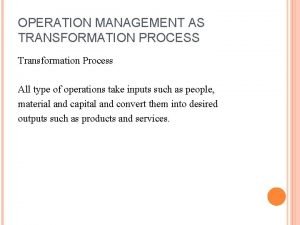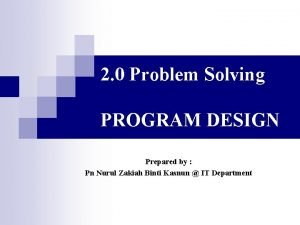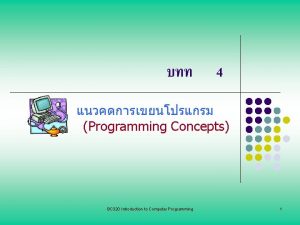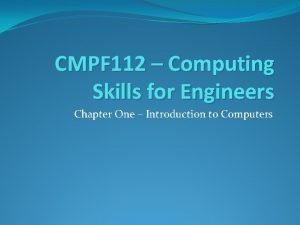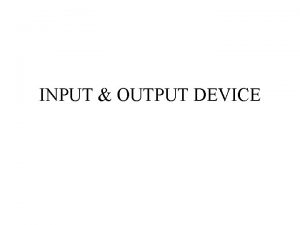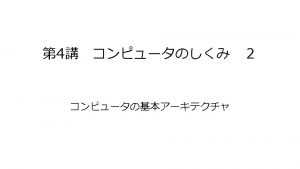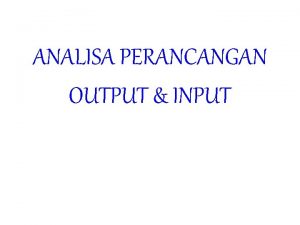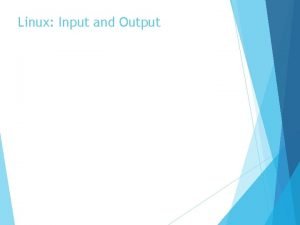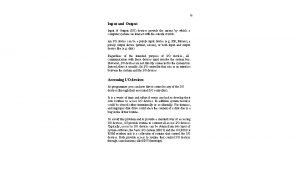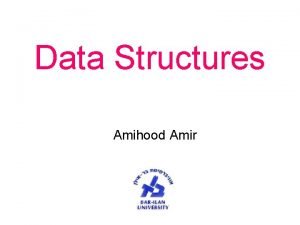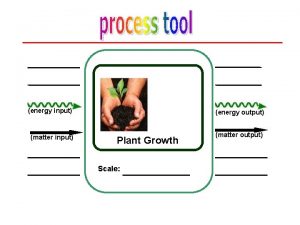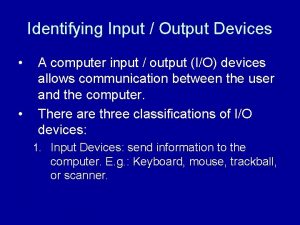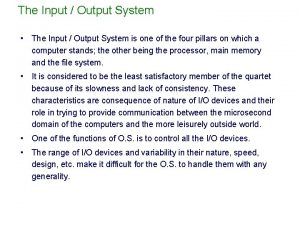The Production Process INPUT TRANSFORMATION PROCESS OUTPUT Factors












- Slides: 12

The Production Process INPUT TRANSFORMATION PROCESS OUTPUT

Factors of production are the resources of LAND, LABOUR, CAPITAL and ENTERPRISE used to produce goods and services.

FACTORS OF PRODUCTION LAND Land is the natural resources on the planet. It includes space on the ground, hills, seas, oceans, air etc LABOUR Labour is the human input (workers, managers etc) into the production process. The UK has about 58 million people of which approximately 35 million are of working age. CAPITAL Man made physical goods used to produce other goods and services. Examples include machines, computers, tools, factories, roads etc. Increases in the level of capital are called INVESTMENT Each individual has a different level of skills, qualities and qualifications. This is known as there HUMAN CAPITAL. ENTERPRISE The entrepreneur provides the initial ideas. They risk their own resources in business ventures. They also organise the other 3 factors of production.

The Production Process INPUT TRANSFORMATION PROCESS OUTPUT

THE THINK BLOG • Think about your school. What evidence is there of the 4 factors of production land, labour, capital and enterprise? • Now do the same for a business that you know something about. • What qualities are needed in an effective entrepreneur? • Think about your own human capital. What skills and qualities do you have?

Types of production The factors of production are combined to make goods and services. Choices have to be made over what to produce and how to produce. The value of total production in an economy is known as TOTAL OUTPUT.

Types of Industry • PRIMARY INDUSTRY • SECONDARY INDUSTRY • TERTIARY INDUSTRY

PRIMARY INDUSTRY Industry that extracts raw materials from the earth, such as coal, fish and wheat. Raw materials are mined, collected, grown or cut down. Examples coal mining, agriculture, oil extraction

SECONDARY INDUSTRY Industry that processes primary products into manufactured goods. Examples car production, making tables

TERTIARY INDUSTRY Businesses that provide a service, either to individuals or to other businesses Examples hairdressing, banking or solicitors

De-industrialisation This refers to the change in the balance of the economy between the output of different types of industry. In the UK and other advanced economies there is NOW LESS PRIMARY INDUSTRY and MORE TERTIARY INDUSTRY The UK has experienced the loss or decline of a number of established industries e. g. shipbuilding, mining These have been replaced by a growth in the service sector e. g. leisure facilities, retail. People generally have more TIME and DISPOSABLE INCOME to spend on these options.

QUESTIONS A Which is the fastest growing sector (primary, secondary or tertiary) at present in the UK and why? B Which types of industry are the following: a) hairdressing b) copper mining c) farming d) education e) financial services
 Input transformation output
Input transformation output Input transformation output process
Input transformation output process Jelaskan proses pembuatan multimedia content production
Jelaskan proses pembuatan multimedia content production Inputs outputs transformation processes and feedback
Inputs outputs transformation processes and feedback The transformation process in operations management
The transformation process in operations management Sample of significance of the study
Sample of significance of the study Input process output paradigm
Input process output paradigm Input-process-output explanation
Input-process-output explanation Bc-320
Bc-320 Is a digital camera input or output
Is a digital camera input or output Digital camera input or output
Digital camera input or output Input process output electronics
Input process output electronics Input process output
Input process output
